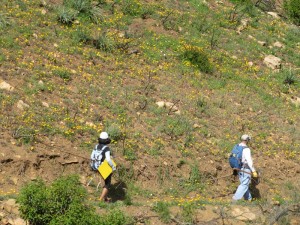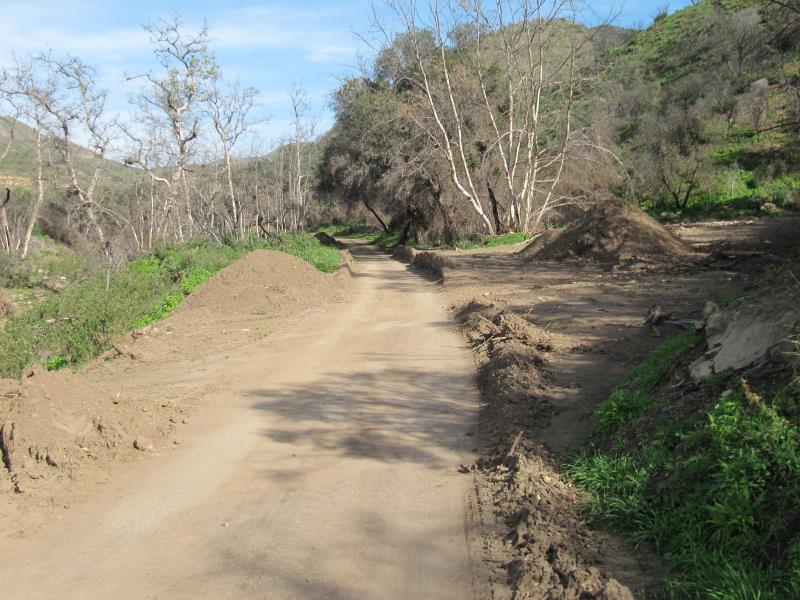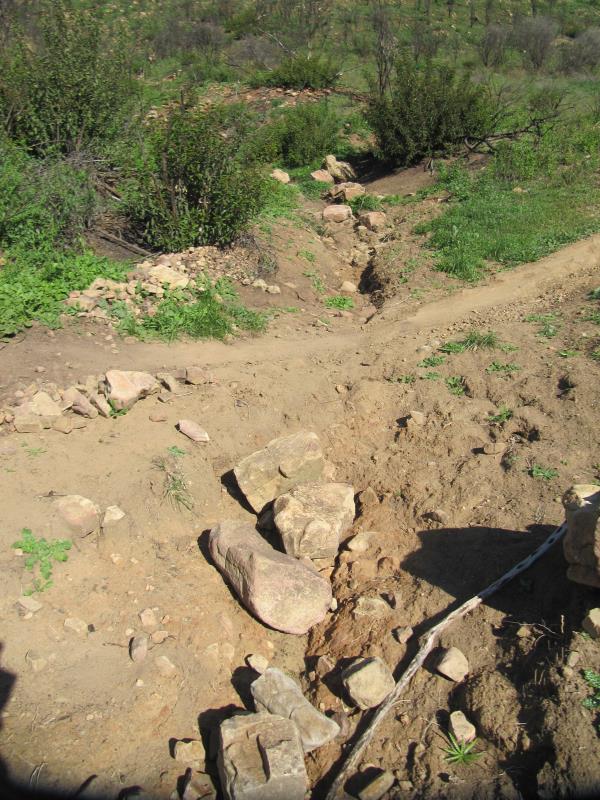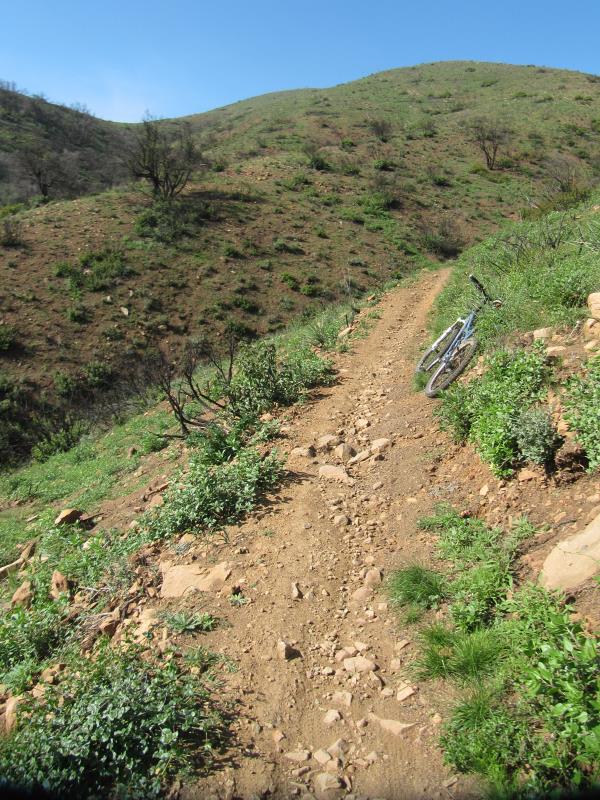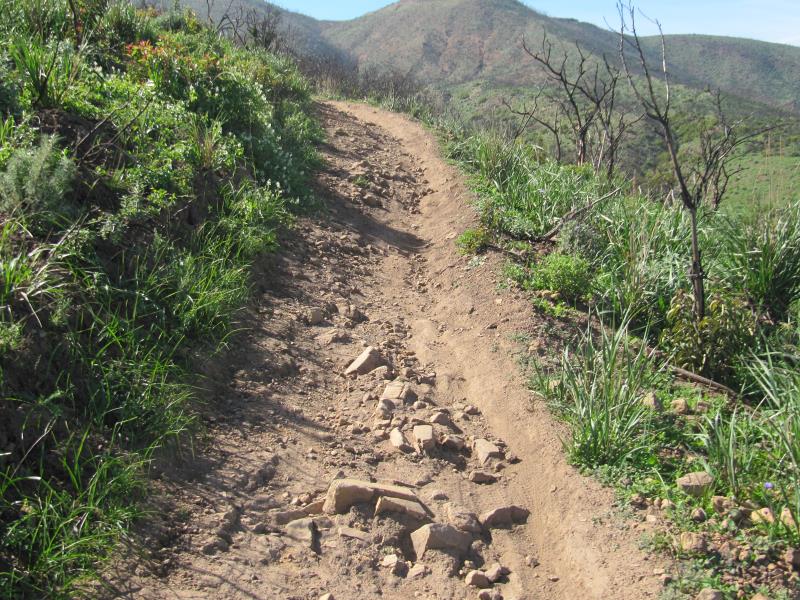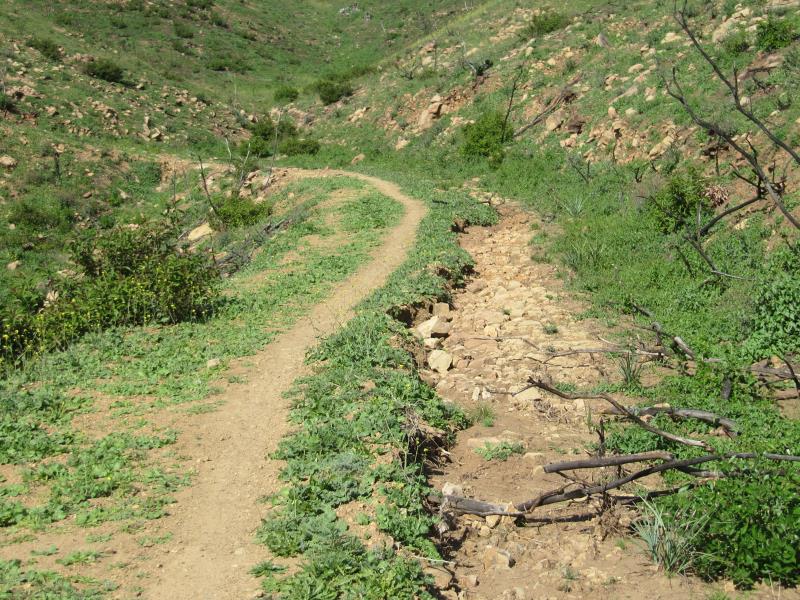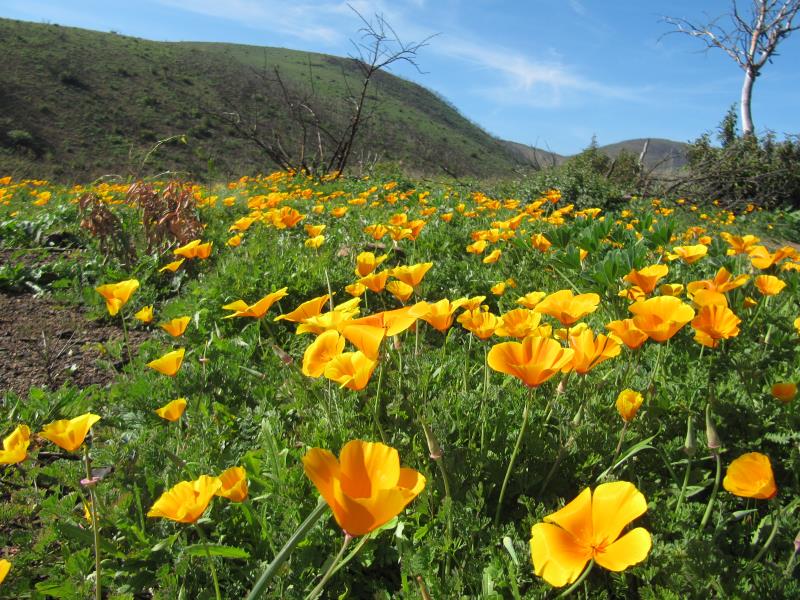For the most extensive trailwork weekend of the year, 150 volunteers signed up on Saturday, the first day of the 34th annual SMM Trail Days, to help restore trails in Point Mugu State Park (Sycamore Canyon). Another fifty signed up for the following Sunday. The theme for the weekend was to restore trails damaged by the December floods.
On Saturday, the workers split into about 10 crews. Most of them worked on trails in the State Wilderness, east of the main Sycamore Canyon Trail. The CORBA crew of 17 shuttled to the bottom of Guadalasca and hiked to their work area. We were to build rideable paths in three locations where stream crossings had been destroyed. At the first location, the stream had left a culvert half exposed. Some rocks had been piled against it, making a bit of a ramp to help ride across, but it was still quite a hazard. We left some of our crew there to build up more rocks over the exposed culvert to smooth the crossing. When we hiked back down, were we ever surprised to find that they had completely covered the culvert, filling up the bottom of the stream bed to a few inches above the top of the pipe, and the width of the culvert, about 15 feet! You would never have known that the culvert was almost washed away in that flood!
 Before we got to the second work site, we encountered a tree that had fallen across the trail. It had burned in the Springs Fire (May 2013) and had just fallen a few days earlier. We spent about 20 minutes pushing it to the side of the trail.
Before we got to the second work site, we encountered a tree that had fallen across the trail. It had burned in the Springs Fire (May 2013) and had just fallen a few days earlier. We spent about 20 minutes pushing it to the side of the trail.
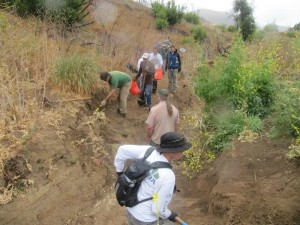 At the second site, the water had eroded the banks, leaving a vertical drop of about four feet down to the stream bed on both sides, with a gap of about 10′ between. Here, another group was to build a ramp down to the level of the stream bed, then another ramp up the other side. This work took special care because environmental regulations do not allow us to move dirt from the bank into the course of the stream, even though it’s completely dry. (This is to keep dirt from clouding the stream and ocean, interfering with the ability of fish to migrate and reproduce.) When building the ramps, the team carefully dug into the dirt, dragged it away from the bank and put it into buckets. The buckets were carried up the trail where the dirt was used to fill in ruts.
At the second site, the water had eroded the banks, leaving a vertical drop of about four feet down to the stream bed on both sides, with a gap of about 10′ between. Here, another group was to build a ramp down to the level of the stream bed, then another ramp up the other side. This work took special care because environmental regulations do not allow us to move dirt from the bank into the course of the stream, even though it’s completely dry. (This is to keep dirt from clouding the stream and ocean, interfering with the ability of fish to migrate and reproduce.) When building the ramps, the team carefully dug into the dirt, dragged it away from the bank and put it into buckets. The buckets were carried up the trail where the dirt was used to fill in ruts.
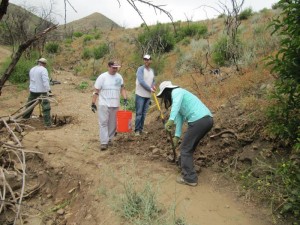 The remainder of the CORBA crew continued hiking up the trail almost another mile to the third work site. Here the flood had again destroyed the crossing, leaving a drop of about four feet at the edge of the trail. We were to realign the trail to move it a few feet away from this drop. Again, we had to carefully remove the dirt from the edge of the stream, relocating it into ruts up the trail by way of buckets.
The remainder of the CORBA crew continued hiking up the trail almost another mile to the third work site. Here the flood had again destroyed the crossing, leaving a drop of about four feet at the edge of the trail. We were to realign the trail to move it a few feet away from this drop. Again, we had to carefully remove the dirt from the edge of the stream, relocating it into ruts up the trail by way of buckets.
The first and third team finished before the end of the work day, so they went to the aid of the second team. They had the biggest project by far; however, there was only so much that could be done at once due to the confined area of the work.
At about 2:00 pm, everyone hiked back down the trail to catch the shuttles back to the staging/camping/bath/eating area at the Danielson Multiuse camp. We spent the afternoon relaxing and chatting. Meanwhile, the State Park Staff volunteers were stoking the wood-fired grill and making other preparations for the barbecue dinner, consisting of tri-tip, chicken, veggie burgers, baked beans, salad and garlic toast.

In line for the barbecue dinner
Dinner was followed by the raffle, where almost everyone (and perhaps everyone) won an outdoor recreational objet de swag of some sort. The people whose tickets were drawn first won some really, really good prizes!
View the photos of Saturday trailwork, the R&R area and barbecue dinner in CORBA’s photo gallery.
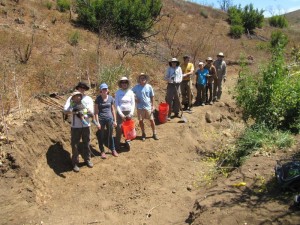
The work crew when the ramps are finished
The work day on Sunday is always a lot smaller than Saturday, so we broke up into just three crews. The CORBA crew of 10 returned to Guadalasca to finish off the middle stream crossing. It was a bit of a race to get it finished by 11:40, as the shuttle was to pick us up at noon at the bottom of the trail, but we did it, just scraping by! We moved a huge amount of dirt, digging out those two ramps, and filled in a lot of ruts on the nearby trail.
Both days, dozens of mountain bikers passed through our work area. Most of them thanked us for our work as they went by, recognizing that they wouldn’t have to carry their bikes across the streams when we were finished. A few stopped to ask how they could find out about future trailwork events so they could help out too.
View the photos of Sunday trailwork on Guadalasca in CORBA’s photo gallery.
Back at the staging area, we had a lunch of leftovers, followed by another raffle drawing for Sunday’s volunteers. We departed the park about 1:30 – time for a shower!
Thanks to the CORBA volunteers and the many others who put on and attended this event, helping to keep these popular State Park trails in great condition!







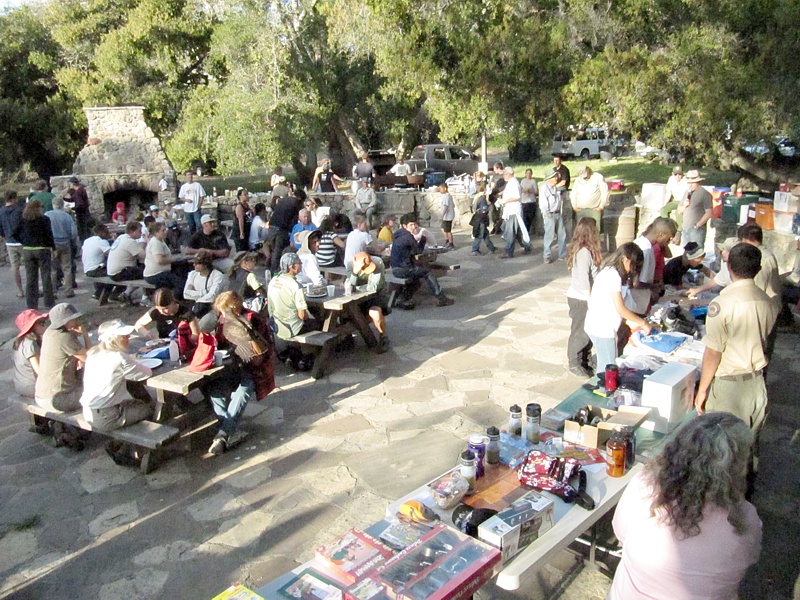
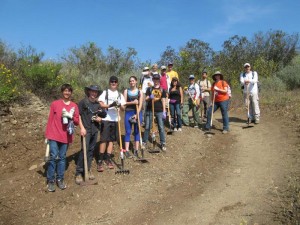
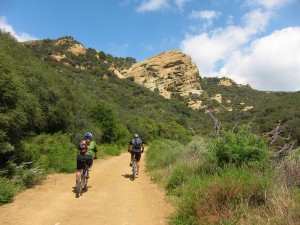
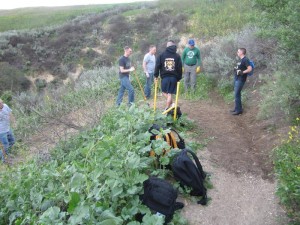
 At noon, following the morning of trail-building, workers will be treated to hamburgers / vegi-burgers, chips, fruit and drinks while enjoying the camaraderie of fellow trail enthusiasts!
At noon, following the morning of trail-building, workers will be treated to hamburgers / vegi-burgers, chips, fruit and drinks while enjoying the camaraderie of fellow trail enthusiasts!